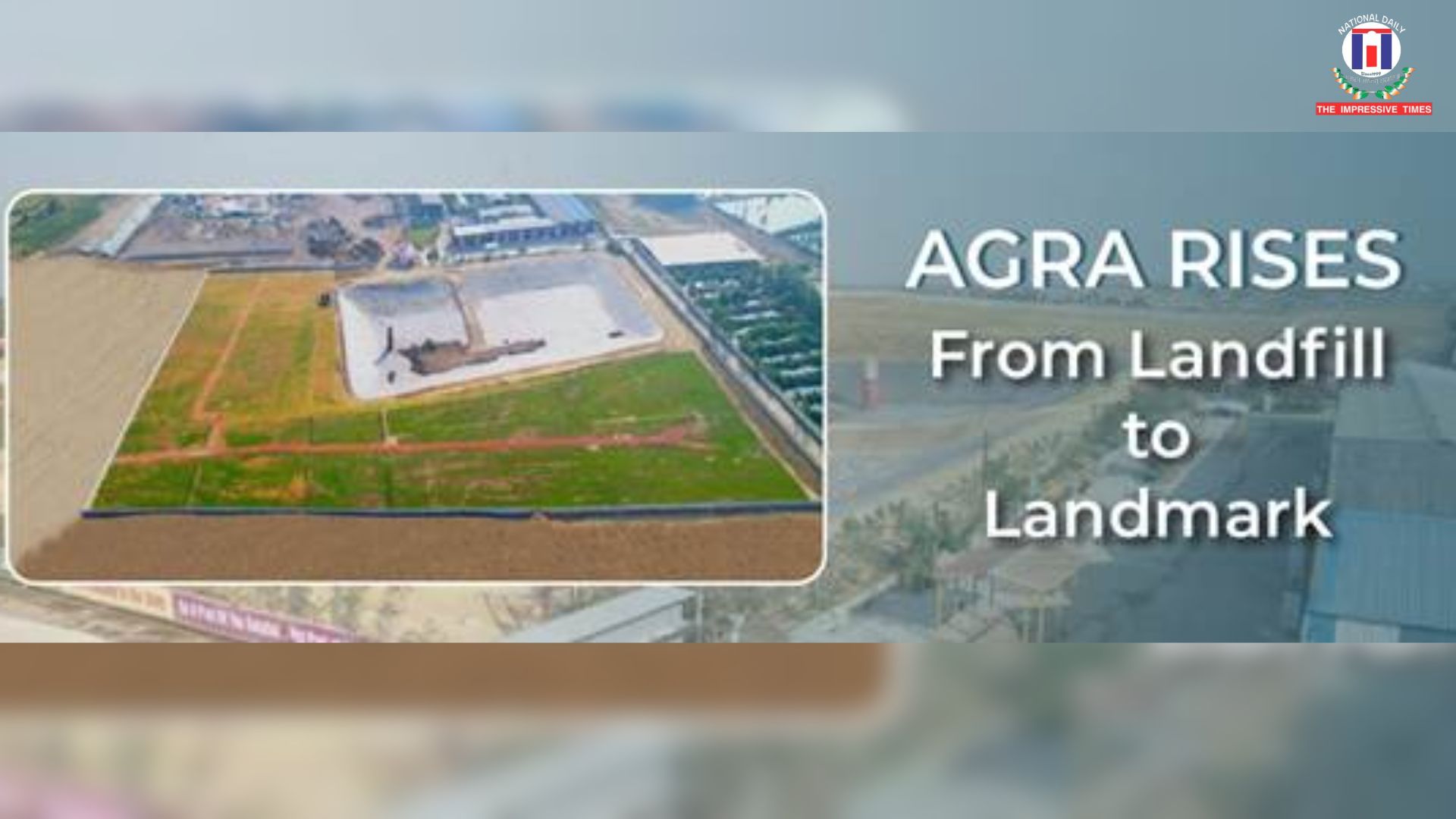
Agra, July 10, 2025: Once infamous for its massive landfill, Kuberpur in Agra has now emerged as a shining example of sustainable urban development. Under the Swachh Bharat Mission-Urban (SBM-U), the Agra Municipal Corporation has transformed the city’s largest dumpsite into a state-of-the-art Integrated Waste Management City, achieving a milestone in green infrastructure, land reclamation, and smart waste processing.
Back in 2007, the Kuberpur site functioned as a conventional landfill, receiving thousands of tons of solid waste every day. Over time, the area turned into an environmental hazard, raising health and safety concerns for the local population.
In 2019, inspired by the vision of Prime Minister Narendra Modi and guided by Uttar Pradesh Chief Minister Yogi Adityanath, the Agra Municipal Corporation launched a mission to rehabilitate the site. The operation began with bioremediation and biomining techniques to remove legacy waste, implemented in partnership with SPAAK Super Infra Pvt. Ltd.
To address the continuous inflow of fresh waste, a 300 TPD (tons per day) waste-to-compost plant was set up in 2019 and later upgraded to 500 TPD. In 2023, the city took a transformative step by converting the entire site into a zero-waste zone with advanced facilities for waste processing and recycling.
Key components now include:
By December 2024, nearly 1.9 million metric tons of legacy waste had been safely processed, reclaiming 47 acres of land at an estimated cost of ₹320 crores. The rejuvenated land has been put to model use:
Today, the site is not just a symbol of cleanliness but also a national learning center for sustainability. Students and researchers from schools, colleges, IITs, and private institutions regularly visit the facility to understand real-world waste management innovations.
This initiative is in perfect alignment with Swachh Bharat Mission (Urban) 2.0, showcasing how visionary governance and public-private partnerships can turn environmental liabilities into urban assets.
Agra’s transformation story demonstrates that with strong leadership, innovative strategies, and community participation, even the most polluted spaces can be reborn. Kuberpur is now not only Agra’s Green Heart but also a beacon for cities across India aiming to adopt sustainable waste management models.
















No Comments: